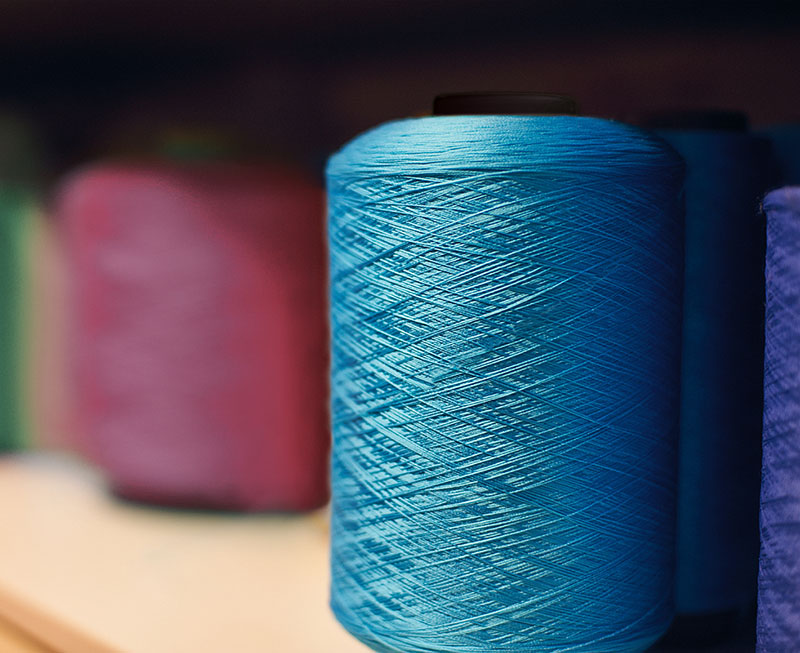
TEXTILE
The automobile sector introduced the conveyor belt into industrial production, giving automation an enormous boost. Although, industrial mass production started much earlier. Using steam power for the mechanical weaving loom, the textile industry can be regarded as the starting point of the industrial revolution. Since then, in the last two centuries, textile machines have evolved into enormously complex and very large machines. Apart from spinning and weaving, nowadays there are numerous applications in the various processes performed in which high-quality micromotors from MRC are used. These include machines for sewing on buttons as well as material testing devices for examining the quality of yarns. MRC's extensive range of products offers optimum drive solutions for all of these applications.
Winding is the first step in textile production. Spinning mills create yarn from raw fibers, winding this preliminary product on large reels. As they are too large for the weaving machines and most products are produced using various reels of yarn, yarn is usually rewound onto a smaller reel. Often, individual fibers are twisted together to form a twisted yarn, giving it additional volume and stability. The yarn is unwound and rewound during nearly every process step prior to its final processing. This also contributes to a higher quality of the intermediate results. For such demanding positioning tasks that require a high level of accuracy, dynamic start-stop applications or frequently reversible movements, like in a yarn guider, MRC high-dynamic stepper motors are widely used. They are also characterized by a long service life and high reliability thanks to their electronic commutation.
Another important application in a textile machine is the so-called feeder, making sure the yarn always has the right tension. The rapid reaction of the drive to load changes and the fine dosing of the motor power to prevent the yarn from breaking are important. The available space is, however, also very limited and, of course, the motors must not determine the maintenance cycles – like all machines, longevity has top priority here as well. Depending on the user, various motors from MRC are used for this task, such as the DC motors with graphite commutation.

Apart from these examples, there are many other applications in various steps in textile production, using MRC high-quality micromotors. For example sewing buttons, knitting or testing devices, analyzing the yarn’s quality. MRC's extensive range of products offers an optimum drive solution for all of these applications.

High level of accuracy

Dynamic start-stop

Frequently reversible movements

Small size and low weight


